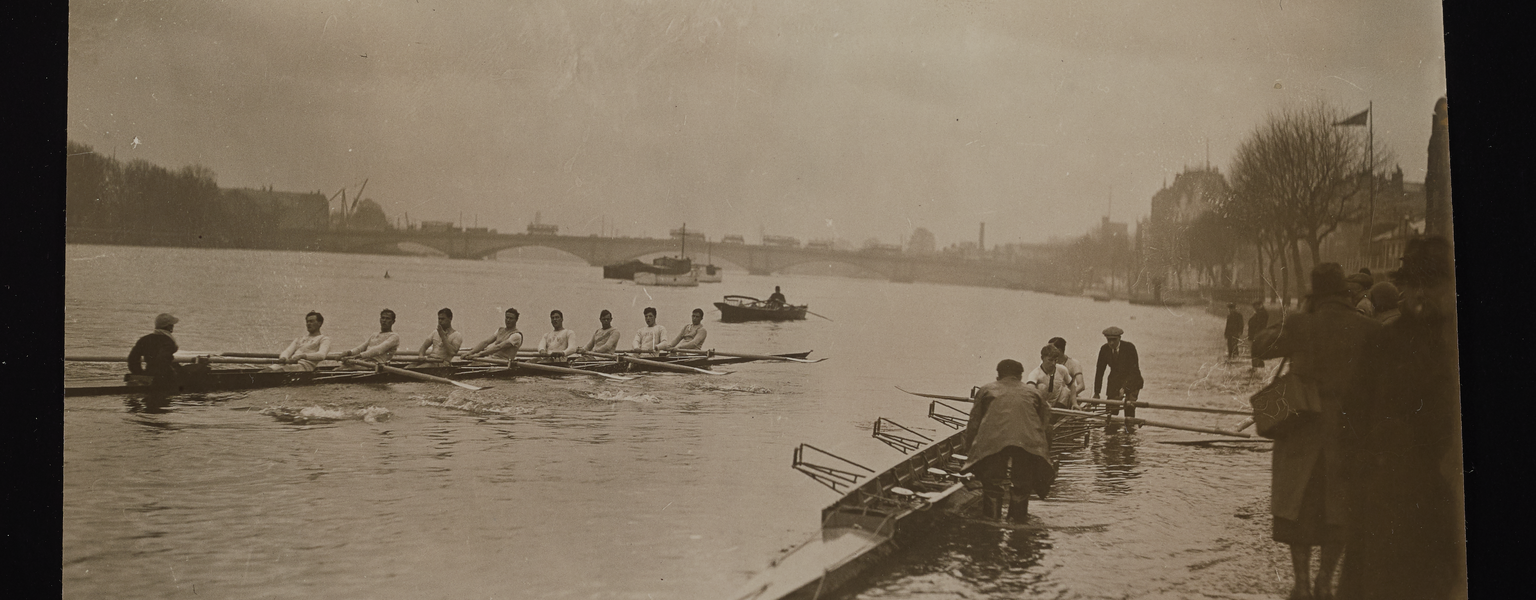The annual boat race began in 1856, with men’s and women’s races both taking place from 1964, and the race only pausing for world wars and the COVID-19 pandemic. Around 250,000 spectators cheer on the racing crews along a 4.2-mile (6.8 km) stretch of the river, with millions more watching on television.
In 1934 Cambridge won the men’s boat race by 4 ½ lengths, finishing the course in 18mins and 3 seconds – a record at the time (both teams beat the previous record that day).
The 19.2 metre Racing Eight boat which was rowed to victory that year is part of the Science Museum Group Collection. The boat can be seen in this photograph from the Daily Herald Archive (it contains several million photographs which the Science Museum Group also cares for).

One of the 1934 Cambridge crew was William George Ranald Mundell “Ran” Laurie. Ran went on to win Olympic gold as a rower in 1948, with Jack Wilson in the coxless pairs.
Wilson was also in the 1934 winning Cambridge crew and their boatmates Annesley Kingsford, Kenneth Payne, Bill Sambell, and Noel Duckworth went on to compete at the 1936 Olympics, placing fourth.
Ran’s son is Hugh Laurie, of Blackadder, House and The Night Manager fame. Hugh rowed for Cambridge in the 1980 boat race – the closest race in a century – when Cambridge lost to Oxford.

After joining the collection, the 1934 Cambridge Racing Eight boat was displayed in the Science Museum’s Shipping Gallery for more than five decades, from 1963 until 2012.
When the gallery closed and the boat was carefully moved to the Blythe House Object Store in west London. You can see the boat below and briefly in this 3D scan of the gallery produced shortly before the gallery closed.

A decade later in September 2022, our conservation, logistics and object handling teams prepared to move the Racing Eight once again, this time into our new collection management facility at the National Collections Centre in Wiltshire.
First, the condition of the 19.2-metre-long boat was thoroughly checked. Conservators removed the seats, footrests and outriggers and stabilised some cracks to the wood. The Racing Eight was then wrapped and padded to protect it for the journey ahead.

The boat is so long it had to be carried from Blythe House by hand, before being carefully transported on a ‘trombone trailer’ by a company which specialises in unusual loads.
It’s now safely in its new Wiltshire home, waiting to be seen by the public in 2024, when the facility opens for public tours, school and research visits.

